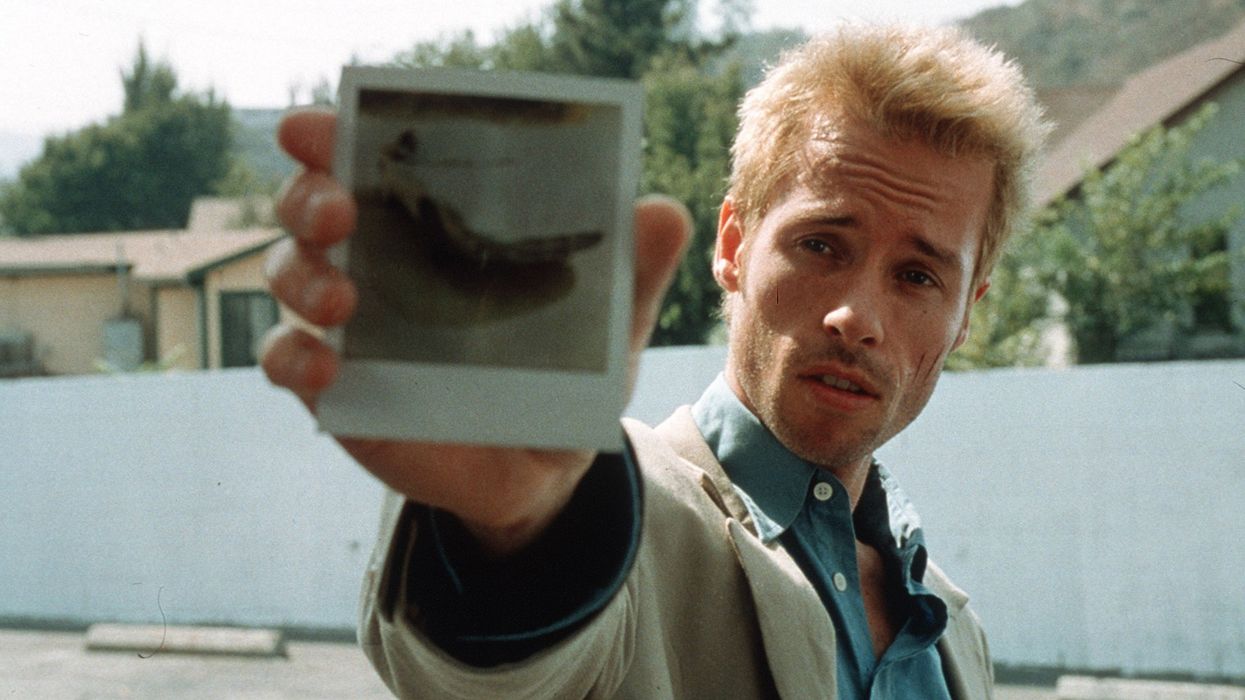What Watching 'Memento' in Chronological Order Can Teach About Story Structure

Christopher Nolan's Memento was a sleeper smash-hit in 2000: the smart indie used an ingenious backwards narrative structure and well-drawn but mysterious characters to draw us into the world of Leonard Shelby, the 'ten minute man' who suffers from anterograde amnesia, unable to make new memories. Now the film has been re-edited to run chronologically, and is available to watch online. Click below to see what an indie filmmaker can learn from the narrative structure of this indie classic!
If any movie demands multiple viewings, it's Memento. The film, based on the short story "Memento Mori" by Nolan's brother, Jonathan, shows us, starting with a mysterious backwards murder, the story of Leonard Shelby, a man on a quest to avenge his wife's rape and murder by a mysterious man known only as "John G." Because he can't make new memories and is incapable of remembering his life for more than ten minutes at a time (due to the assault that killed his wife), Leonard is helpless, dependent on his tattoos and notes to remind him of who his friends and enemies are (and he seems to have more enemies than friends). The film's complicated structure, illustrated here, disorients the audience, and in the ambiguous ending, we learn that Leonard's quest might be little more than a fool's errand he has set himself on, a way to give meaning to his fractured life:
Now there is a recut of the film online, fashioned by a YouTube user into chronological order (a similar cut, done by Nolan, is also available on a special, limited-edition DVD):
Watching this edit is a revelatory experience, revealing the inner workings of the opaque plot (though I wouldn't recommend watching it before seeing the original; it would be like watching The Usual Suspects knowing who Keyser Söze was the whole time.) Over at Film Forensics, they have a great breakdown of the viewing experience. In this passage, the author gives his interpretation of the key scene where Leonard burns the evidence of his first killing, which he has forgotten (though it is never made clear whether Teddy is telling the truth):
I think [Leonard's] doing this because he knows that he will forget he killed Jimmy G., and lose the satisfaction of the revenge, so he’s now deliberately setting up to “discover” later on that Gammell is John G. and have another revenge, so he can feel that satisfaction again. This all fits. The only thing I don’t understand is why he is setting up what appears to be his friend Gammell in this way. This feels like a mean, ruthless streak in Lenny. The only thing he wants out of life is the satisfaction of revenge, and he doesn’t care who he kills to get it.
This is one of the most important points: what is slyly underplayed in the original is Leonard's agency in his own fate. This cut gives the film a whole new meaning, and, from a filmmaker's perspective, is very instructive in showing just how Nolan accomplished his sleight of hand.
What do you think of this version? What lessons can an indie filmmaker or screenwriter learn from Memento, a film that relied on good old-fashioned narrative structure to construct a house of mirrors that more than a decade after its release is still confounding viewers?
Links:
- Memento in Chronological Order -- YouTube
- Memento in Chronological Order -- Film Forensics
- Memento Mori by Jonathan Nolan -- Impulse Nine













